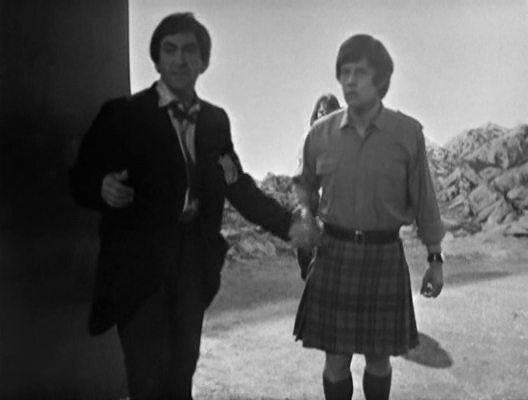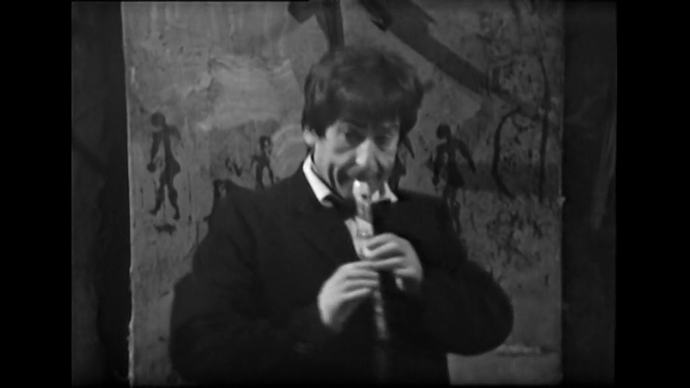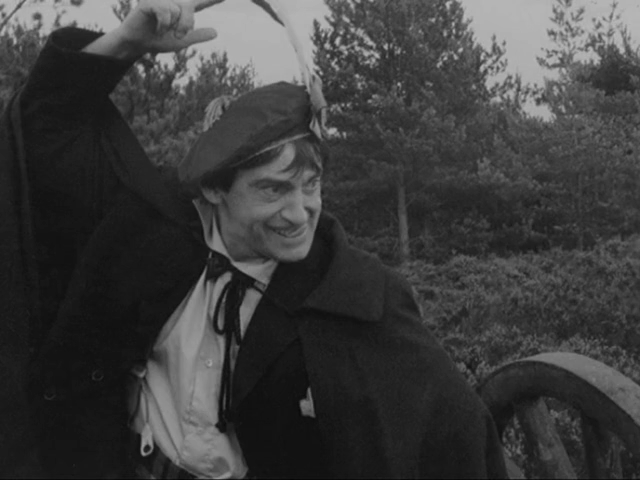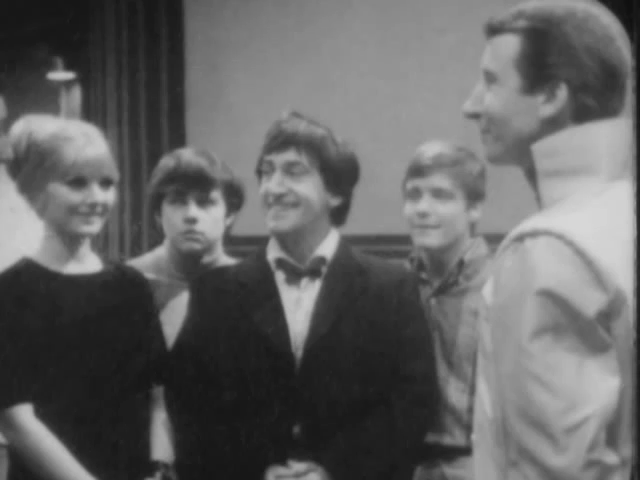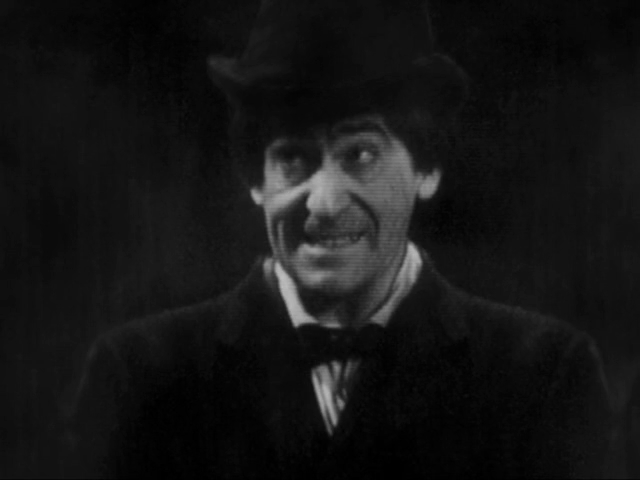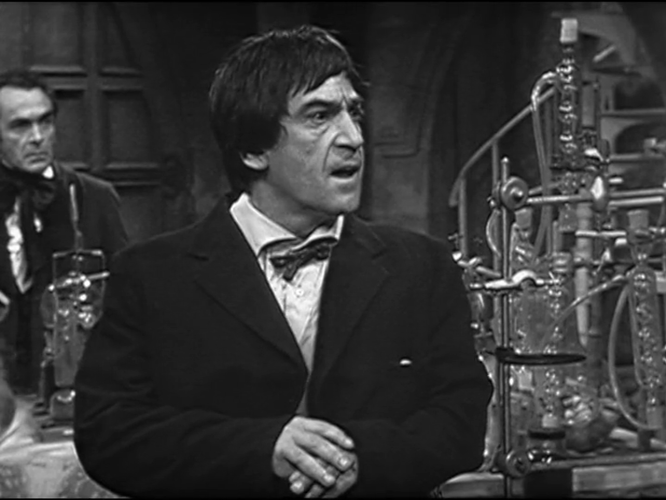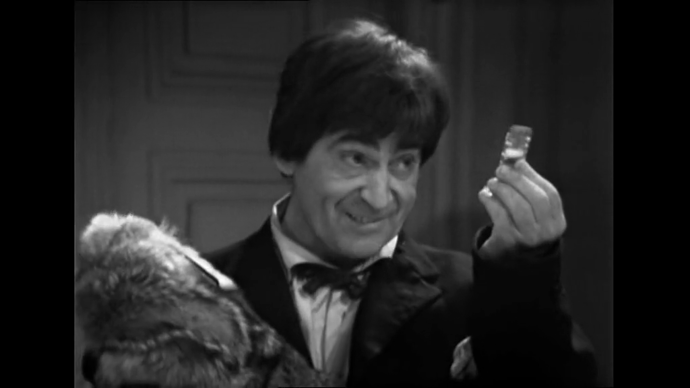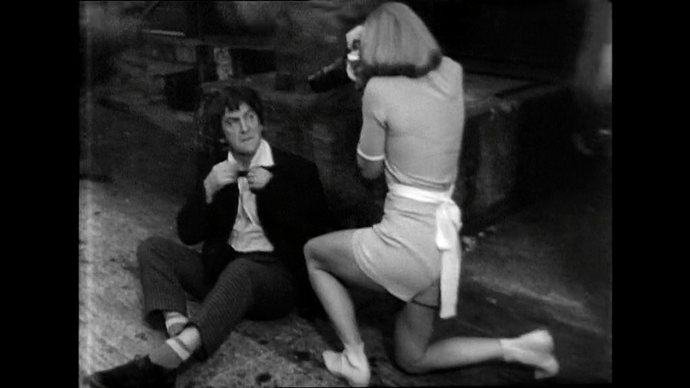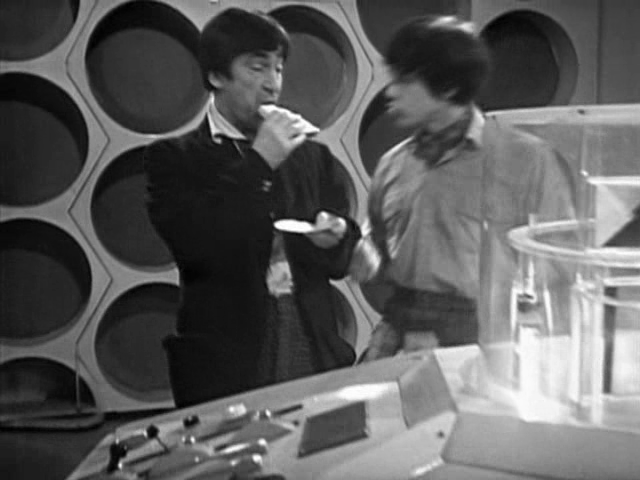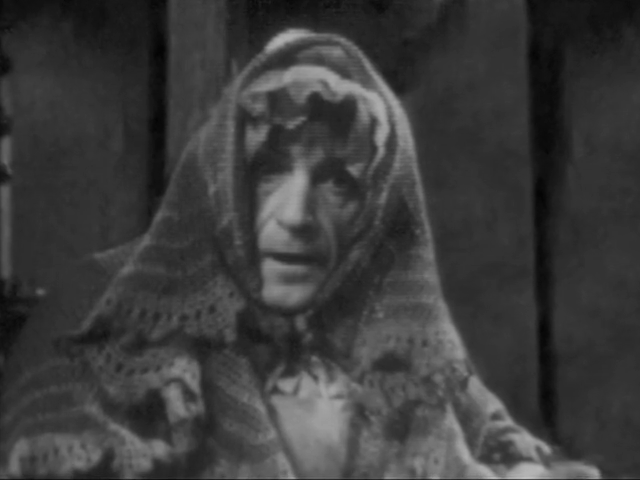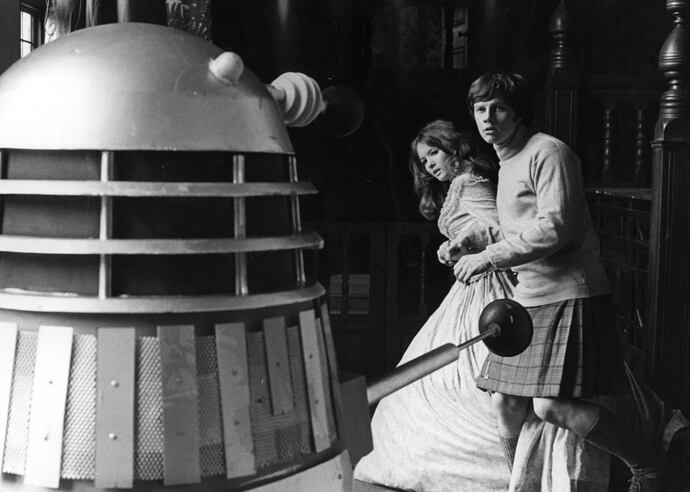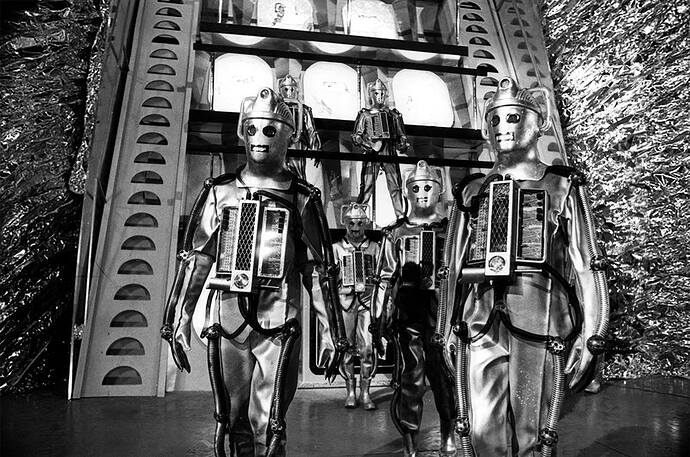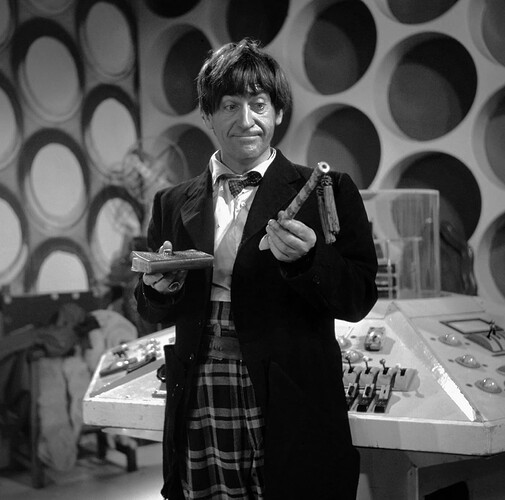It was late afternoon, one Saturday in 1967. I was in my grandparents’ lounge and Grandpa was sat in his armchair watching a TV programme with a particularly eerie theme tune. I’d never heard anything like it—it made my skin crawl, but in a good way!
I was kneeling at a small table that was covered in LEGO, appropriately enough, building a toy spaceship. Of course it was a very traditional looking rocket ship because I had yet to learn that a space vehicle could look like a telephone box.
The setting of the story seemed as spooky as the music, a creepy old house where a young man was hiding in the shadowy corridors. “Why is that man wearing a dress?” I asked. “It’s a kilt, he’s Scottish, shush!” was Grandpa’s short reply (I might mention here that during the war, my grandfather had been a Seaforth Highlander).
My attention returned to the LEGO spaceship, but not for long. It was the strange robotic creature gliding out of a wall that grabbed my attention. It had a harsh, grating voice as it barked orders at some old men, one of whom was called the Doctor.
I scooted out from behind the table and practically threw myself down on the carpet in front of the television set. My heart was pounding. “What… is… that?” I gasped.
I didn’t see my grandfather’s face, but I can imagine him smiling as he replied: “That is a Dalek.”
I barely had time to process the name before the episode swept me up in its eerie music and strange, shadowy world. Already I was hooked on this new (to me) television series called The Adventures of Jamie. Well, that’s what I called it for at least two weeks. What else would it be called? After all, the incredibly brave highlander was obviously the hero. However, as much as I liked Jamie I absolutely adored the bad robot. What had Grandpa called it again? A… Dar-lick?
Over the next few weeks, I had some adjustments to make. The television series I had fallen in love with was not, in fact, called The Adventures of Jamie. Nor was it entirely set in a mansion or in Victorian times. This funny little Doctor was the real star of the show, and I was quickly warming to him.
Joining the series midway through The Evil of the Daleks had caused me a certain amount of confusion, and it didn’t help that, at the end of the story, Doctor Who took a break. Thankfully, when the series returned in September, the Doctor and Jamie put me straight on a few matters as they ushered a girl called Victoria into…
Wait—was that a police box? What was that doing there? Were the Doctor, Jamie, and Victoria meant to be inside it? But that couldn’t be right, because they were clearly standing inside the control room of… a spaceship? I was confused again.
Watching Victoria’s wide-eyed disbelief as the Doctor introduced her to the TARDIS, I felt a little better. I wasn’t the only one struggling to make sense of this strange new world. It was just as well, then, that the Doctor and Jamie helpfully explained the show’s premise—to her, to me, and to goodness knows how many other children watching that day. Every adventure is someone’s starting point, and I began afresh with The Tomb of the Cybermen.
I quickly learned that you couldn’t take anything for granted with Doctor Who. During The Evil of the Daleks’ climactic battle between warring factions of the metal meanies, one of them had its top blown off. Inside was a bubbling mass of living matter, which made me realise that the Daleks were not, after all, robots, but metal shells with creatures inside them.
Likewise, the Cybermen—or, as I called them, the Cider-men (no, that’s not a joke; I really did call them that)—weren’t robots either. They were once people who had transformed themselves into machine-beings, and they’d do the same to you if they caught you—eek!
The Yeti, on the other hand, looked like living creatures—but they turned out to be robots. Doctor Who certainly kept me on my toes.
If I had been impressed by the Emperor Dalek’s throne room (and, my goodness, I had been), then I was even more impressed by the sets for the Cybermen’s tomb. Not that I thought of them as sets at that age—oh, don’t get me wrong, I knew this was fiction, but the TARDIS interior, the Dalek city, and now the Cybermen’s base looked so good as to be entirely believable to my young eyes.
Now, I’m aware that my previous statement might sound somewhat implausible to someone raised on super high-definition colour television. It’s true that vintage 1960s Doctor Who has often been mocked for its cheap production values. But I think you have to consider the small black-and-white screen I was watching the series on. Then there’s the fact that most BBC dramas of that era had a stage-like quality—barely one step removed from theatre. If Doctor Who’s sets occasionally wobbled, then so did the sets from Dixon of Dock Green. That was just the way things were back then, and I accepted it. Any rough edges were effortlessly smoothed by my youthful imagination.
In 1967, I didn’t have much homegrown sci-fi to compare Doctor Who with. At age four, going on five, my usual fantastical fare consisted of some rather splendid puppet shows—Fireball XL5, Space Patrol, Thunderbirds, and, new kid on the block, Captain Scarlet and the Mysterons. Of course, there were the flashy American imports, but I think I had a mental partition between homegrown and overseas telly that, in those early years, prevented me from comparing Doctor Who’s production values with those of The Invaders and Voyage to the Bottom of the Sea. Besides, at that age, I wasn’t really analysing sets, costumes, or effects. I was far too absorbed in the adventure.
It’s a shame we lose that sense of childlike wonder as we grow older. I’ve fought hard to keep it, but I haven’t always been successful. Perhaps that is why those magical far off days of the 1960s remain my favourite era of television viewing.
Patrick Troughton was my Doctor. And you know what, he still is.
